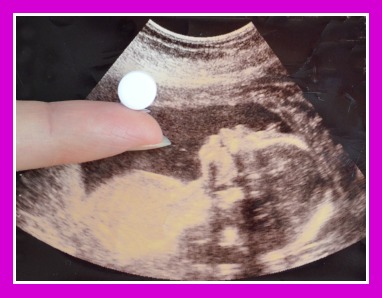Breastfeeding As Birth Control - How Effective Is It?
Breastfeeding as birth control was once believed to be 100% effective. An occasional unplanned pregnancy was an exception from this rule. Back then people were not so focused on planned parenthood. Nowadays we prefer being in control of our lives and family planning has long been a norm.
In
general, breastfeeding women can choose from natural family planning (fertility
awareness methods), non-hormonal options and hormonal birth control methods. This article will cover natural family planning options.
Breastfeeding as birth control is one of the natural family planning methods, meaning no artificial contraceptives and devices are used.
Natural family planning is based on the practice of figuring out infertile periods and arranging sexual activity in accordance with them. Breastfeeding is one of woman’s infertile periods, along with pregnancy, menstruation and post-menopause.
Lactation Amenorrhea Method (LAM)
Using breastfeeding as birth control is called Lactation Amenorrhea Method (LAM) and it is 98% effective. Its effect is based on the fact that breast stimulation during baby sucking promotes production of hormone prolactin.
Prolactin suppresses production of fertility hormones – estrogen and progesterone. Baby sucking has to be consistent, on demand and not supplemented with formula or water.
Here is a full list of conditions that have to be met to make LAM work:
- Breastfed baby is under 6 months old - before solids and additional fluids start
- The baby is EXCLUSIVELY breastfed - no water, formula, pacifiers, and bottles with pumped milk
- The baby is breastfed day and night - daytime feeding intervals shouldn’t exceed 4 hours, and no longer than 6 hours at night
Night time feedings are important even if you breastfeed full-time during the day. Progesterone and estrogen are most active at night.
- The baby is breastfed on demand
- Your period is not back yet (bleeding and spotting at times after the delivery is not period).
Pumping and hand expression are not as efficient in stimulating prolactin production as nursing. Therefore, you will need to use back-up contraceptive methods to prevent pregnancy. Do not fully rely on LAM if pumping.
These guidelines have to be followed strictly to achieve 98% effectiveness. Every time a feeding is postponed or supplemented, woman’s fertility is on its way to recovery. Read about getting pregnant while breastfeeding.
Do not rely solely on your menstruation as a sign of return of fertility. Menstruation follows ovulation. Your fertility returns several days prior to your actual first menstruation and you may get pregnant during these several days.
That’s why to make breastfeeding as birth control method the most effective, don’t change your breastfeeding pattern. Any decrease in the amount of prolactin can lead to ovulation and pregnancy even before your first period. Read more about menstruation after pregnancy.
Other Fertility Awareness Methods
Two other breastfeeding and birth control compatible options are calendar and temperature methods. They are based on figuring out days when conception is the most likely and planning sexual activity around them. They are widely used by women trying to avoid the use of any type of artificial birth control and are 80-85% effective.
Temperature method
It is bases on the fact that during ovulation woman’s body temperature rises. Start measuring your temperature and writing it down daily beginning on the first day of the cycle (day 1 of your period).
Temperature change is rather
subtle, rarely more than 1 degree. Figure out the day when the temperature
starts rising. Let’s say it is day 16. First subtract 6 from this number, then
add 4 to this number. It means that period between day 10 to 20 of your cycle are the most
favorable for conception. Numbers 6 and 4 are constant.
Calendar method
I am writing about this method, because it is used a lot as a natural birth control, however, it is not applicable to breastfeeding mothers, since it is based on monitoring your cycle duration for 6 months and then doing some math to figure out safe days.
Breastfeeding mothers don’t have 6 months with menstruation after the delivery to wait before they can use this birth control option. And you shouldn’t base your calculations on your pre-pregnancy records either, since your cycle duration may change. If you decide to save this method for later, here are some details on how to do it:
Keep record of your menstruation cycle duration for 6 months. Duration of the cycle is the number of days between the first day of the period (including it) and the day before the first day of the next period (including it). So day 1 of your period is day one of your cycle. Then out of these 6 cycles pick the longest and the shortest. Subtract 11 out of the longest and 18 out of the shortest. Numbers 11 and 18 are contant. You will get something like 18 (for the longest period) and 6 (for the shortest). It means that days from 6th till 18th of your cycle are the most favorable for conceiving.
I hope this information helps you with making your decision about using breastfeeding as birth control. If natural family planning doesn’t meet your needs, learn about other non-hormonal and hormonal contraceptives.
There are many ways to show your love and devotion to your kids and to win their trust. Breastfeeding is the most natural one.
Yours,
Viktoriya
Back to top of Breastfeeding As Birth Control>Breastfeeding While Pregnant>Breastfeeding Home











